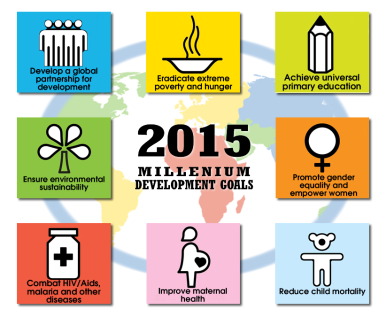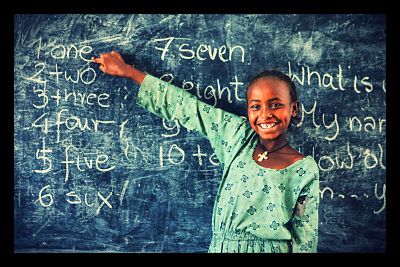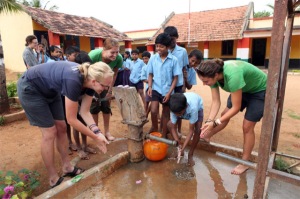The largest gathering of world leaders in history took place in September 2000 during the Millennium Summit hosted by the United Nations. During this momentous event, the Millennium Declaration was adopted, and a series of goals were set down to be achieved by 2015.
- Eradicate extreme hunger and poverty
- Achieve universal primary education
- Promote gender equality and empower women
- reduce child mortality
- improve maternal health
- Combat HIV/AIDS, malaria, and other diseases
- Ensure environmental sustainability
- Develop a Global Partnership for Development
Within the heading goal, there are targets that will be used to determine success. For example, one of the targets of the first goal is to halve the proportion of people who suffer from hunger from 1990 to 2015. Each of these is thought to be a part of basic human rights that every person in the world should have access to, regardless of where they live, their income, their gender, or any other external factors.
So, how have we done?
It’s difficult to portray the effect of the MDGs have had on global poverty accurately as, unfortunately, some countries are excelling while others are falling woefully behind. Looking at the goals on a country by country basis may lead you to think that almost every one has been successful or that none has and that the whole thing is a failure. This makes tracking success and determining the impact a very complicated project.
The World Health Organization has compiled some statistics on each of the goals and their targets. For example, the proportion of underweight and malnourished children has fallen from 28% to 17% between 1990 and 2015. At first glance, it would appear that the goal to halve the number of underweight children is close at hand, but the reality is that the progress has been very unevenly distributed.
The target to reduce global infant mortality/under-5 mortality by two-thirds is suffering from a similar complication. Between 1990 and 2013 the number of children dying under the age of 5 decreased by 49%, and the global rate of decline has even accelerated in recent years. But, despite the improvements, the target amount is not likely to be met this year.
At the same time, though, it is thought that we will be able to easily surpass the goal of getting 15 million people on antiretroviral therapy by the end of the year. This achievement will promote the reduction of people newly infected with HIV/AIDS in the coming years.
In short, huge improvements have been made, and many people have been lifted out of poverty or experienced an improvement in quality of life, thanks to the Millennium Development Project. The fact is, though, that a lot more work has to be done if we want to reach the initial goals set down and even beyond.
What’s in store for the next 15 years?
Presently the UN is working on creating a new list of Sustainable Development Goals to be met in the years to follow. The idea is that these will finish and build on the work of the Millennium Development Goals. At the 2015 Sustainable Development Summit in September, the new goals will be adopted by the UN and the Member States.
Some of the proposed SDGs include:
- End all poverty everywhere.
- Achieve gender equality.
- Reduce inequality within and among all countries.
- Ensure sustainable production and consumption patterns.
- Conserve and sustainably use oceans, seas, and marine resources for sustainable development.
In all, there are 17 proposed SDGs and the UN is in the process of defining the agenda in time for the September summit.
What can the rest of us do?
While the leaders of the world work together to end poverty, inequality, and climate change, the rest of us can be doing our
part as well. Continue to spread the word, educate those around us on the stark realities outside our comfortable lives, volunteer time, donate to charity, and (most importantly) never give up.
For more information on the Millennium Development Goals, the Sustainable Development Goals, and what you can do to help, visit the UNDP.


